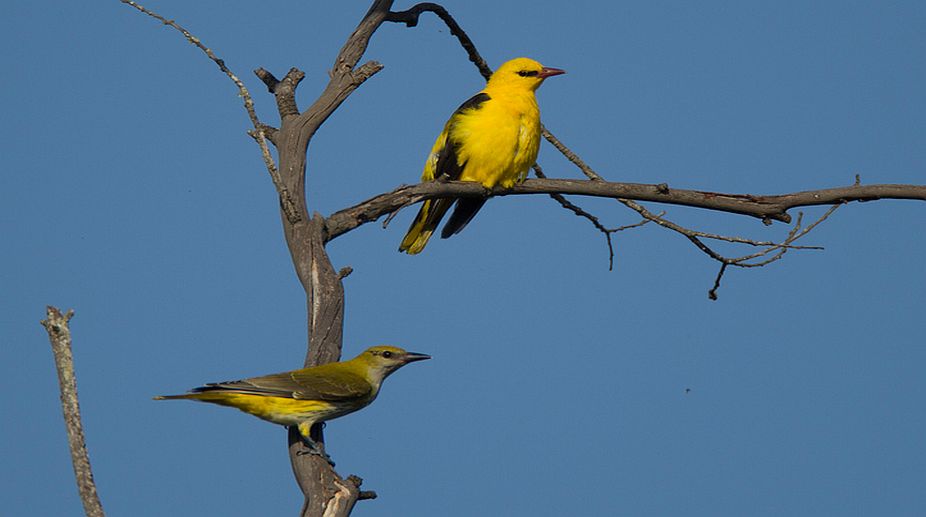T. rex dinosaur not as intelligent as monkeys, reveals study
Dinosaurs like T. rex, previously thought to be smart, were not as intelligent as monkeys, a study revealed on Monday.

Representational Image (PHOTO: Getty Images)
Scientists have discovered the most complete specimen of a tiny dinosaur-era bird, trapped in 98 million-year-old amber, that has exceptionally well preserved feathers, talons and other features.
Excavated from a mine in Myanmar, the piece of amber holds the specimen of a group of extinct toothed birds called enantiornithines, which died out at the end of the Cretaceous period (about 145 million to 65.5 million years ago).
Advertisement
Body proportions and plumage development in the tiny specimen indicated that it was very young.
Advertisement
The feathers' structures and distribution highlight some key differences between the ancient avians and modern-day birds, according to the study published in the journal Gondwana Research.
The fossils' exceptional preservation of plumage helps paleontologists understand the diversity of feathers and the role they played for early avians, said Jingmai O'Connor, professor at the Chinese Academy of Sciences.
"Feathers can never be well understood in normal fossils," O'Connor said.
"But in amber, we get crystal-clear views of what primitive feathers were like, and they reveal all sorts of bizarre morphologies," she said.
Though scientists had previously found specimens of this bird group in amber, the new find included features never seen before, such as the ear opening, the eyelid and skin on the feet.
Its body measured about six centimetres in length.
Scientists used micro-CT scans and digital 3D reconstruction to further analyse the specimen, 'Live Science' reported.
The amber chunk – which measured around 8.6 cm long, 3 cm wide and 5.7 cm thick – had been divided down the middle into two pieces.
This cut sliced through the specimen's skull, damaging some of the bones and separating the chick's beak from its braincase and neck.
However, the body was near-complete, with the amber containing the tiny bird's head and neck, part of its wings, feet and tail; and plenty of soft tissue and attached feathers.
Advertisement